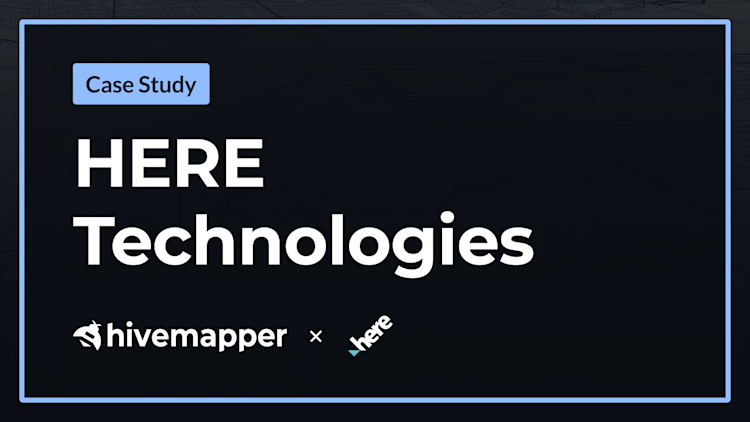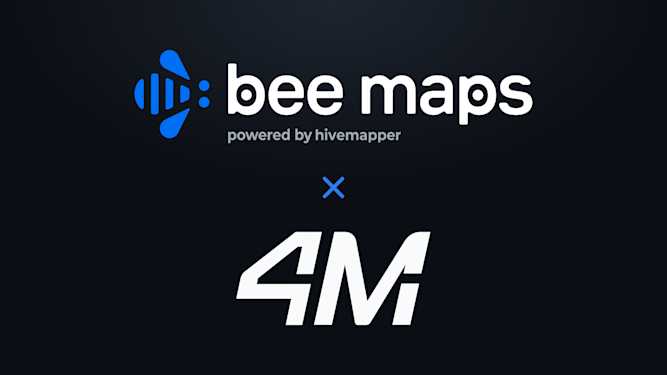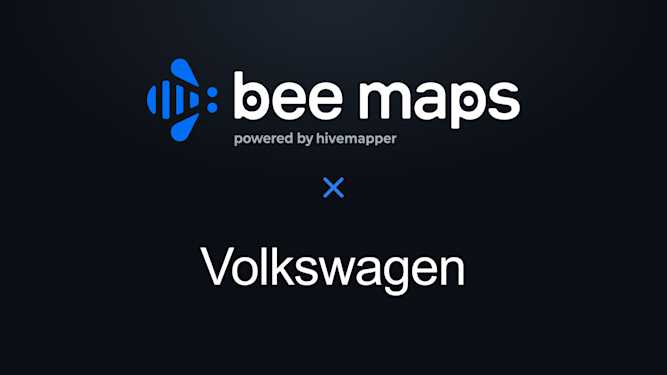The Network is Buzzing
Case Study: HERE Technologies

Mapmakers are always looking for an edge. They need to understand the world better than anyone. When a speed limit changes or a new road is built, they need to be the first to know.
That’s where Hivemapper comes in. With a unique blend of scalable collection, rich imagery and robust privacy protections, Hivemapper is now helping two of the 10 largest global mapmakers keep their maps up-to-date and accurate.
Netherlands-based HERE Technologies, a digital mapmaking pioneer with almost 40 years of history powering some of the world’s leading brands, is an earlier adopter of Hivemapper’s data.
HERE is backed by shareholders that include Audi AG, BMW AG, Daimler AG, Intel Corp, Mitsubishi Corp, Nippon Telegraph and Telephone Corp (NTT) and Pioneer Corp. The HERE platform is consistently recognized as one of the industry’s best, earning top marks as the world’s most effective location platform in a January 2024 report by Counterpoint Research.
Customers of HERE include nearly every global automaker, leaders in e-commerce, transportation and logistics companies, and public sector agencies worldwide. HERE is the global market leader for automotive-grade maps designed to power navigation, advanced driving assistance, EV and automated driving systems.
"We collect and conflate data from thousands of sources at the edge to keep our map as fresh as possible," says Maarten van Boxtel, HERE Product Owner for the Europe, Middle East and Africa regions. "We’re always looking for more ‘eyes’.”
A Deepening Partnership
The partnership between HERE and Hivemapper started with a validation project in late 2022.
Back then, the Hivemapper Network was in its infancy. A few hundred dashcams were active on the network, covering a few thousand kilometers of road network per week. (That number has since soared to more than 7 million, and rising.) But the cost-effective crowdsourced model for collecting high-quality data was compelling.
The validation project proved HERE could utilize Hivemapper data as an additional lever to pull when performing targeted map-maintenance activities globally. The high quality of data, flexibility of consumption, and rapidly increasing geographic coverage all contributed to HERE purchasing 10X the amount of Hivemapper data in 2023.
What began as a simple contract to buy street-level imagery is now evolving into a deeper relationship – one that is built around a shared vision of a faster and more efficient way to use real-world observations in mapmaking for end customers.
"The imagery is how it all started,” Maarten says. “But I think what's most important is that our visions of how mapmaking will evolve are very close. We share the strategic vision of having more intelligence on the edge, and having the camera do a lot of the work before you bring map data to the cloud. That is our longer-term view of where mapmaking should go."
Points and Paths
There are two main ways HERE has already integrated Hivemapper data into its mapmaking process, which it calls the “point-based” and “path-based” approaches.
The path-based approach involves sending long, continuous drive paths through a computer vision pipeline to extract all the map features that HERE wants to update on its map.
For this use case, the critical thing is having long sequences of standardized, high-quality imagery. This underscores the advantage of Hivemapper’s purpose-built hardware over crowdsourced data from a grab bag of different smartphones and off-the-shelf dashcams.
The point-based approach involves more targeted corrections and improvements – typically in situations where object detections fall short. Sometimes, only imagery will do.
The rise of connected cars has given mapmakers access to a powerful new data source: automotive sensors. HERE currently ingests live sensor data from an estimated 44 million connected vehicles, which allows the company to quickly detect objects such as road signs. This has proven to be a critical tool for complying with requirements such as the EU Intelligent Speed Assistance (ISA) regulation, which requires new cars sold in Europe to display real-time speed limit data.
Many road signs have supplemental information. Maarten gives the example of a speed limit sign for a school zone that only applies during certain times of day. This information is critical for HERE to display the correct speed limit. The fresh, high-quality imagery that Hivemapper provides is an important component of the data sources required to get to ground truth.
Another example is a sign on a bridge with a height or weight restriction for trucks. Maarten says HERE has used Hivemapper data to help validate ground truth on the clearance of bridges to support its Fleet Optimization products.
With the launch of the next-generation Bee dashcam in Q3 2024, Hivemapper will support more edge processing to detect objects as quickly as possible. These edge detections will include thumbnail images to help confirm the reality on the ground – a unique offering for forward-looking mapmakers such as HERE.
If you’d like to learn more about Hivemapper’s innovative approach to map data collection, drop us a note at [email protected].


